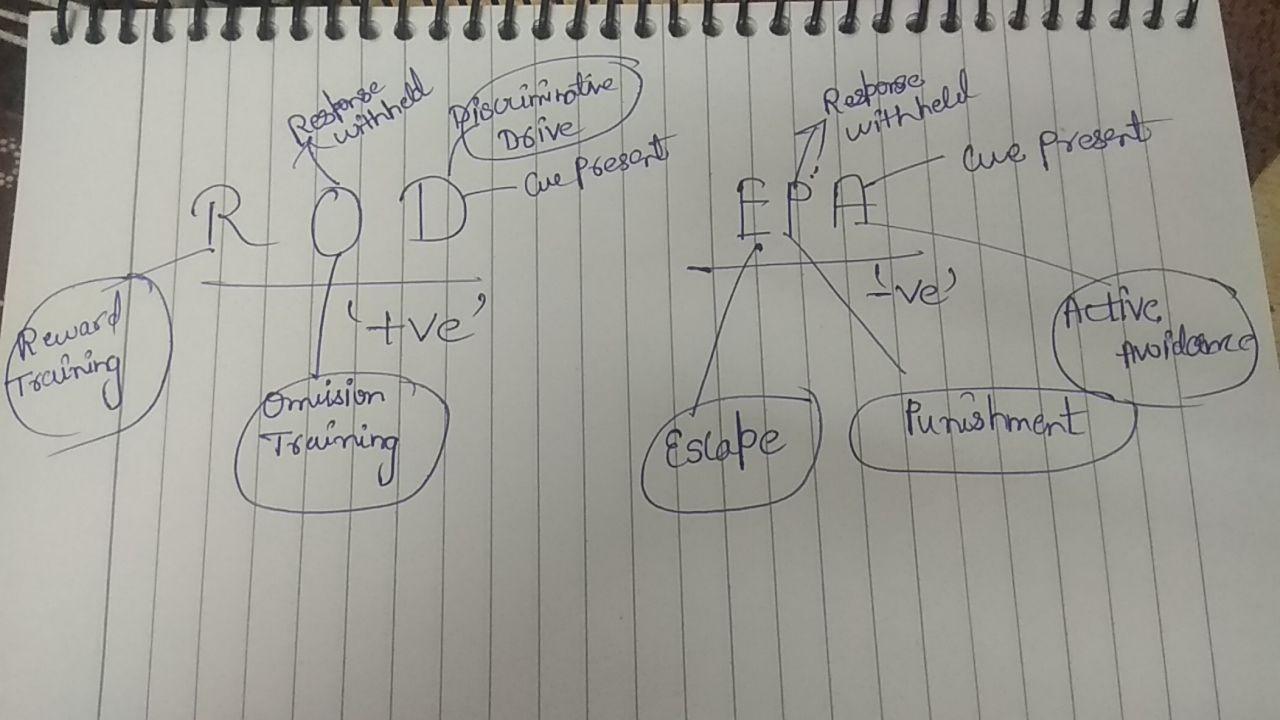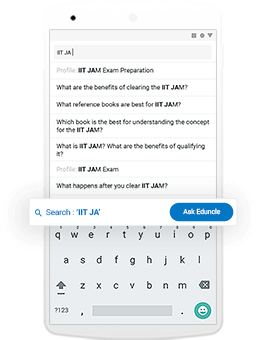Time management is very much important in IIT JAM. The eduncle test series for IIT JAM Mathematical Statistics helped me a lot in this portion. I am very thankful to the test series I bought from eduncle.
Nilanjan Bhowmick AIR 3, CSIR NET (Earth Science)- UGC NET
- Education
In which of the following operant conditioning procedures the training arrangement insists the presence of a cue and making of a response to get negatively rein
In which of the following operant conditioning procedures the training arrangement insists the presence of a cue and making of a response to get negatively reinforced? (1) Escape training (3) Omission training ) Punishment training (4) Active avoidance training
- 0 Likes
- 5 Comments
- 0 Shares
-
Jaison j arackal
3
-
![comment-profile-img]() >
>
-
![comment-profile-img]() >
>
Nidhi vaish Best Answer
[Image 144.jpg] This is a trick to solve all question comes on "Operant condition"- Question is:: A trainer so designs the training procedure that in the presence of cue, negative reinforcement is made contingent on making of a response by the trainee. The operant conditioning procedure so used is called by the name of : (1) Escape training (2) Punishment training (3) Discriminated punishment training (4) Active - avoidance training Answer----; 4 WHY? By applying this trick you can solve this question easily. Just write this as it is as showing in picture. R - Reward training, we give reward and motivate particular behaviour if we want to continue the behaviour O-Omission training, when we omit or remove particular behaviour- response withheld meaning is 'To remove' D- Drive discrimination, ability to discriminate or distinguish between one stimulus and similar stimulus. In this always 'cue present', cue means clue/hints These all are positive in nature.... E- escape training, to escape behaviour the occurrence of the behaviour terminates the aversive stimulus. In other words the dog escapes the stimulus by doing another behaviour and that behaviour is strengthened. P- punishment training, where we punish the particular behaviour and don't want to repeat again.In this "response withheld" always present A- Active avoidance- the occurrence of the behaviour prevents the presentation of an aversive stimulus. In this always " cue present"
-
Saurish
![best-answer]()
Active avoidance refers to experimental behavioral paradigms where subjects (mainly rodents) are trained, following the onset of a conditioned stimulus (CS), to move from a starting position to another position in the testing apparatus within a fixed amount of time (avoidance). Avoidance learning is the process by which an individual learns a behavior or response to avoid a stressful or unpleasant situation. The behavior is to avoid, or to remove oneself from, the situation. Researchers have found avoidance behavior challenging to explain, since the reinforcement for the behavior is to not experience the negative reinforcer, or punishment. In other words, the reinforcement is the absence of punishment. To explain this, psychologists have proposed two stages of learning: in stage one, the learner experiences classical conditioning; a warning, or stimulus, paired with a punishment. The learner develops a fear response when he experiences the stimulus. In stage two, the learner experiences operant conditioning; whereby he realizes that an action response to the stimulus eliminates the stressful outcome. In a common laboratory experiment conducted to demonstrate avoidance learning, a rat is placed in a confined space with an electrified floor. A warning signal is given, followed by an electric current passing through the floor. To avoid being shocked, the rat must find an escape, such as a pole to climb or a barrier to jump over onto a nonelectric floor. At first, the rat responds only when the shock begins, but as the pattern is repeated, the rat learns to avoid the shock by responding to the warning signal. An example of avoidance learning in humans is the situation when a person avoids a yard where there is a barking dog. This learning is particularly strong in individuals who have been attacked by a dog.
Do You Want Better RANK in Your Exam?
Start Your Preparations with Eduncle’s FREE Study Material
- Updated Syllabus, Paper Pattern & Full Exam Details
- Sample Theory of Most Important Topic
- Model Test Paper with Detailed Solutions
- Last 5 Years Question Papers & Answers
Sign Up to Download FREE Study Material Worth Rs. 500/-










 >
>









Jaison j arackal
2